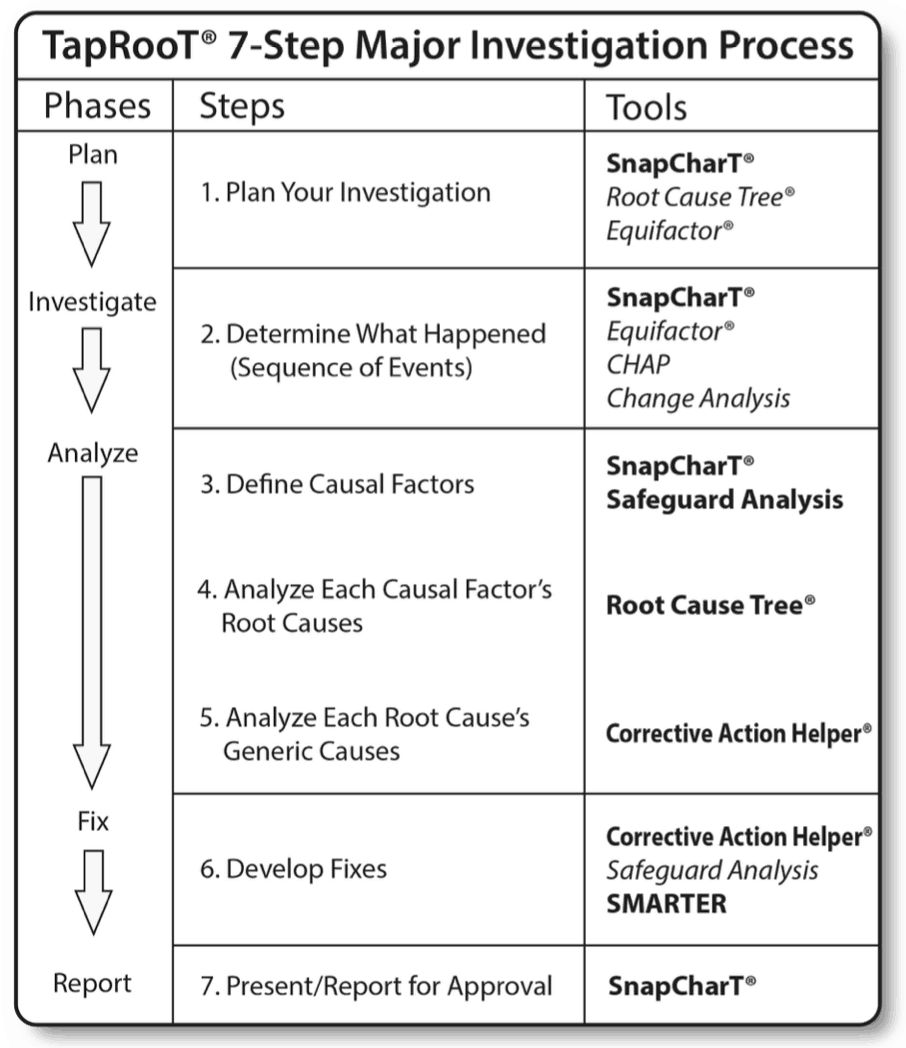How Does TapRooT®’s 7- Step Process Fit into the PDCA Cycle?

Does TapRooT® Fit the PDCA Cycle?
The Plan-Do-Check-Act Cycle (PDCA) has been the standard model for improvement since it was developed in the 1950s. Deming believed that processes should be measured, analyzed, and adjusted in a never-ending loop.
The PDCA cycle consists of four repeating steps:
- PLAN: Understanding what you are going to change and how.
- DO: Implement that change.
- CHECK: Measure the effects of the change and analyze the results.
- ACT: If successful, use what you have learned to expand to other areas or processes. If unsuccessful, return to the planning stage and try again.

This model doesn’t tell you how to Plan, Do, Check, or Act, but only that those processes are necessary steps in implementing a systematic approach to continuous improvement. Sometimes a particular consultant will specify techniques to use (for example, 5-Whys) for a specific phase of the PDCA Cycle.
What is the TapRooT® 7-Step Major Investigation Process
The TapRooT® System uses seven simple steps to take investigators through the planing, investigating, analyzing, fixing, and reporting phases of investigations. In simple terms, it is a process for determining were mistakes or errors are being made, understanding the root cause of those errors, and developing the corrective actions that will prevent those errors from recurring. The process is outlined in the figure below.

You can learn more about the TapRooT® 7-Step Major Investigation Process by clicking here or attending a 5-Day TapRooT® Advanced Root Cause Analysis Team Leader Course to learn the TapRooT® 7-Step Major Investigation Process and all the tools that help you apply the process.
Where does the TapRooT® 7-Step Major Investigation Process reside in the PDCA cycle, and how can TapRooT® be used in a continuous improvement program?
Steps 1 – 5 work to focus your efforts on the right problems and root cause during the Plan step in PDCA.
Steps 1 and 2 make sure you are gathering and organizing all relevant facts and information.
Steps 3, 4, and 5 make sure you find the root cause of the issue and the missing best practices that would prevent the error. These steps are the critical difference between TapRooT® and other RCA methodologies. TapRooT® doesn’t just look for the one mistake that causes the problem but looks at each error in the system and analyses them for missing best practices and generic causes.
Completing steps 1-5 make Step 6, developing corrective actions, easier. By using Corrective Action Helper to make S.M.A.R.T.E.R. corrective actions, you develop corrective actions that are effective and easily measurable to make sure the Do and Check steps are laid out and understood by management.
Step 7 marks the end of the Planning phase. Once you have management’s approval, it is time to implement your Plan.
The TapRooT® Process fits perfectly into existing continuous improvement systems by providing the best method for organizing and understand the root cause of human error and equipment failures.
Learn More About TapRooT®
To learn more about integrating TapRooT® with your quality system, sign up for the Improving Human Performance Track or the Achieving Excellence and Reliability Track at the 2020 Global TapRooT® Summit at the Horseshoe Bay Resort near Austin, Texas.

And check out “The Building Blocks of a Good Quality Program… is it in the Name?”



